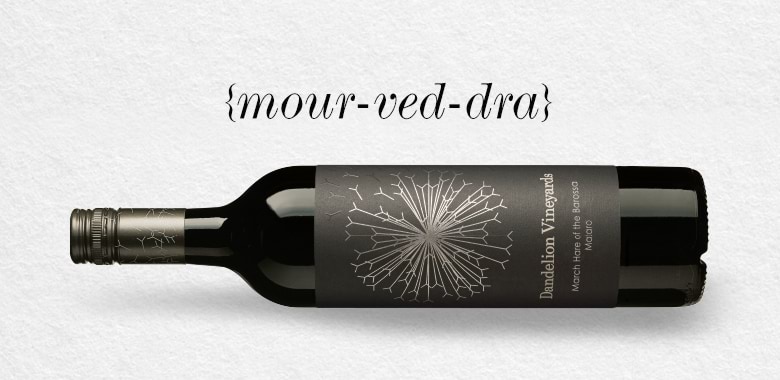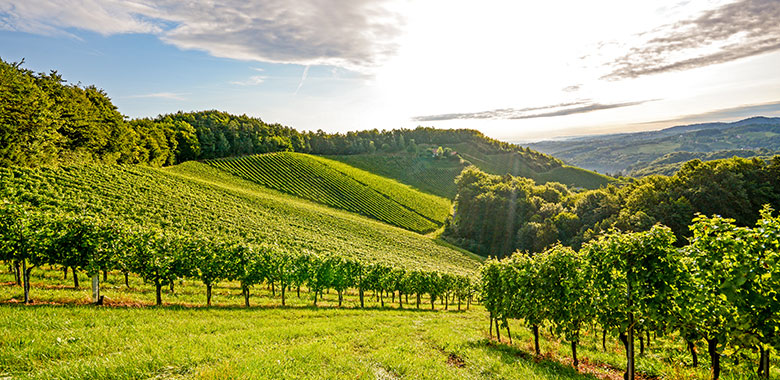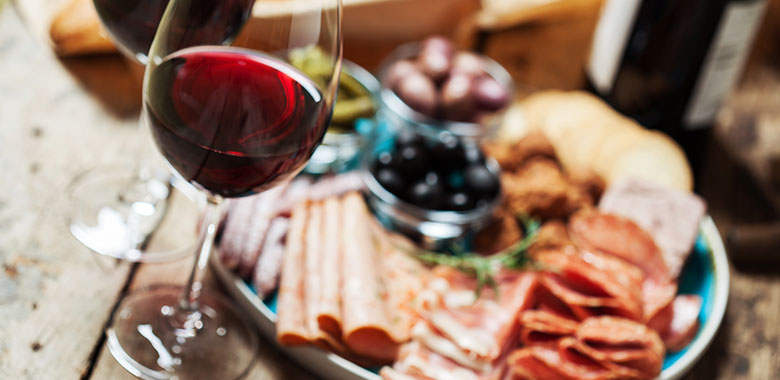
Wine
What is Mourvèdre?
Thought to have originated in Spain and a major variety of the Rhône region, this meaty, rustic and full-bodied red variety is known by not one, but three names – Mataro, Mourvèdre and Monastrell. In Australia it’s referred to as both Mataro and Mourvèdre, while the Spanish often call it Monastrell.
If you’re a fan of Cabernet Sauvignon, then you’re bound to love Mourvèdre with its delicious black and purple fruit, violet and lavender florals, plus savoury characters of black pepper, smoke, meat, earth, thyme, oak and high tannins.
Shop Mourvédre
AN INFOGRAPHIC GUIDE OF Mourvèdre
Mourvédre pairs well with rich, bold flavours like beef short ribs or grilled mushrooms.
Mourvédre can be cellared for up to 10 years.
Mourvédre is a fuller-bodied wine with high tannins.
Did you know Mourvédre is rarely called by its Spanish name?
Where does Mourvèdre come from?

As with so many varieties, we have James Busby to thank for bringing Mourvèdre to Australia. In 1832 he brought vines from Perpignan in the Roussillon in Southern France which, according to Wine Australia, were planted in “the Camden and Minchinbury vineyards of New South Wales where it was known by various names including Balzac and Lambruscat, and then made its way to several areas around Australia, including the Great Western district of Victoria, and Western Australia’s Swan Valley at Houghton’s.
In South Australia it found a home in the Clare Valley, McLaren Vale and, of course, the Barossa Valley. The Barossa still has some of the original plantings, including the oldest Mourvèdre vineyard in the world, planted in 1853 by Johan Friedrich Koch. Eight rows of this original, pre-phylloxera planting still exist on the Old Garden Vineyard at Rowland Flat, and they are still tended by the seventh generation Koch family.”
Mourvèdre in Australia
.jpg)
Mourvèdre really hasn’t enjoyed the limelight it deserves in Australia. From the 1890s to the mid 1950s it was mainly made into fortified wine and since then has been blended away, mostly with Grenache and Shiraz. However, nowadays we’re seeing more and more Australian winemakers putting it front and centre.
A lover of moderate to warm climates, Mourvèdre has adapted well in regions including Barossa Valley, McLaren Vale, Clare Valley and Langhorne Creek where it is blended in GSM’s, but also featured as a stand-alone variety with an ever-increasing fan base.
What does Mourvèdre taste like?
With its high tannins and bold, rustic flavours, Mourvèdre calls for foods that are also full-flavoured including umami rich meats like beef short ribs, pork shoulder, barbequed lamb and game – venison and rabbit. For vegetarian dishes pair it with stuffed mushrooms, roasted beetroot and lentils, or char-grilled vegetable shish kebabs with pesto dressing.

Wine Selectors has several great straight Mourvèdre for you to explore, plus some very popular and moreish Grenache, Shiraz, Mourvèdre (GSM) blends. So, for change try the deliciousness of Mourvèdre and leave the Cabernet in the cellar for another night.